Another stone workshop at Pôle De La Pierre in the Ardennes, with Christophe Mahy and of course our mighty and glorious association Round Table For Architecture!
In this article I will cover the workshop itself, giving information about how to actually carve a quoin, adding some considerations on costs of stone carving.
Hereby you will find my quick blogged summary of the week. Our program is very simple: we are taking the gothic arch we created this summer (first phase) to finish it by carving a moulding in its quoins (second phase), also adding some basic exercises to learn the principles of stone carving.
I will tell you about the amazing things that happen here with us! The moral of this is that we need YOU to join our ranks, participate in our workshops, meetings, conferences and activities! This time we are in Soignies, or Zinnik, in the Ardennes (Belgium), where this long standing "blue stone" quarry is still operational and the local association Pôle De La Pierre collaborates with our Round Table for Architecture and trains new traditional stone carvers.
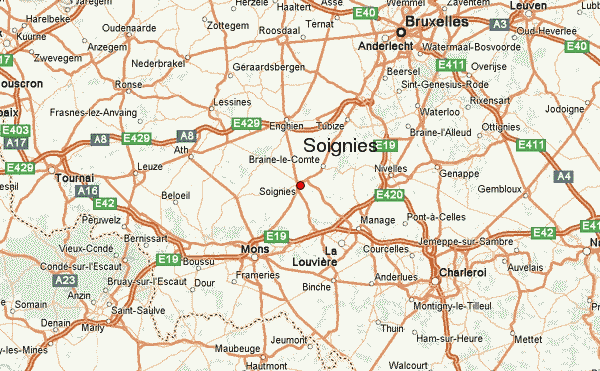

This time we found a great base to establish ourselves into for the week. We lodged in an amazing villa, a place that all of you four or five readers of this site would surely like to visit with your loved ones and finish a regular day like this:
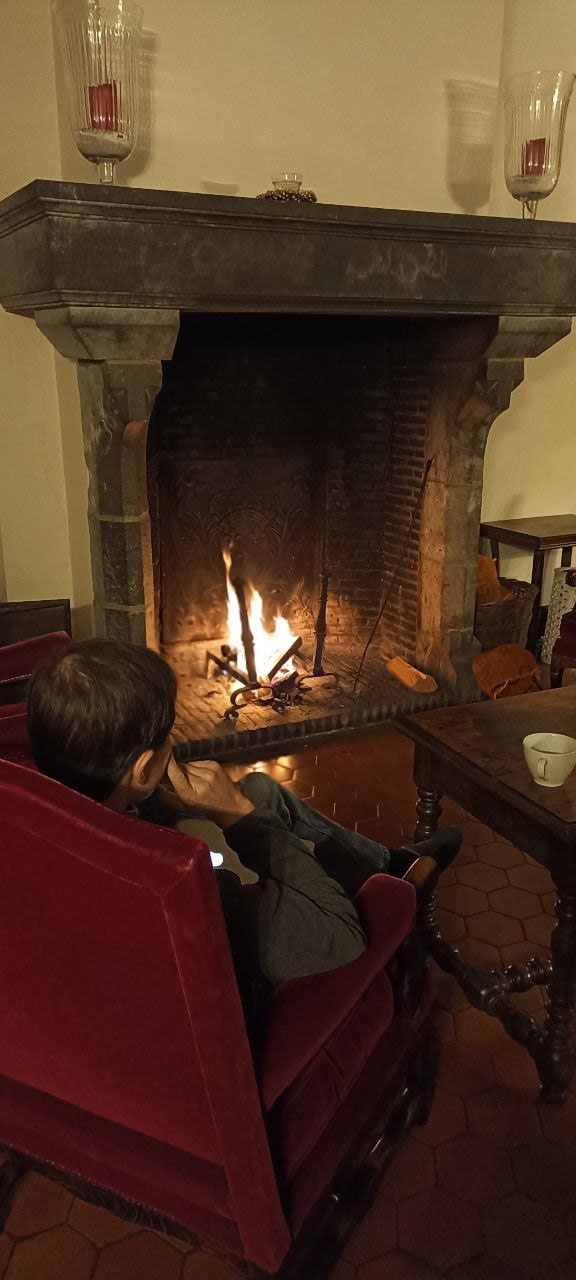
(I'm not sure if Noé was staring at the fire or at the faint "joyeux Noel" writing on the fireplace!)
In any way, you can find more pictures of this amazing location in the following gallery, check it out:
Being immersed among the francophones for a whole week is not something for everyone, I tell you! However the passion for stone carving is stronger than anything (also because I need the skills for a certain personal project), and finally we meet Christophe Mahy, our excellent master stone carver and we're ready to start. First some theory, Then...a bit less theory.
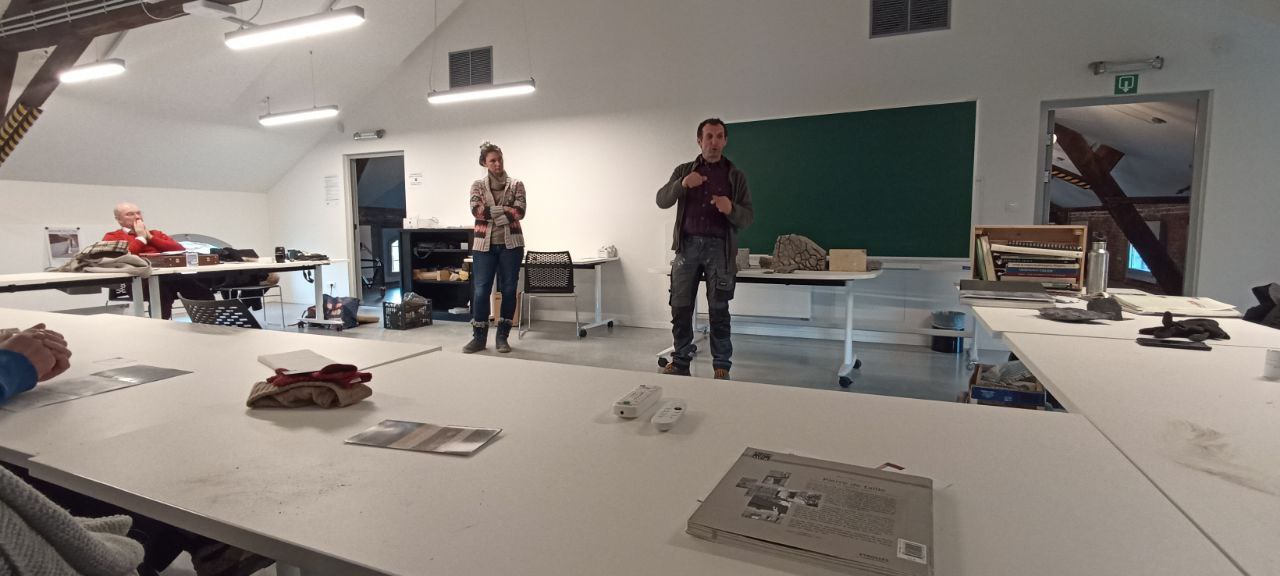

We are all beginners, and if you think what you are seeing here is simple, well, it is. The only problem is that despite the simplicity of what we do, the amount of knowledge and practice necessary to achieve a satisfactory basic level of stone carving is not negligible. Also because stone is an unforgiving material, in the sense that it doesn't forgive your mistakes: you can't roll back and a wrong chisel hit can ruin hours or days of work. So, what better stone to start with than the coriaceous blue stone of the Ardennes? Although some of us didn't start with this workshop —as I said, we are continuing a summer work— the memory of the notorious hand blisters typical of fresh recruits is still alive, and that memory has helped me not to get them again. I feel so experienced now.
EXERCISE ONE
Consisting in flattening the surface of the training block, working it's faces, edges and corners. Oh corners! A nightmare for a beginner!
Quick preparation

The students at their individual stations

Nadia using the "boucharde" with pleasure
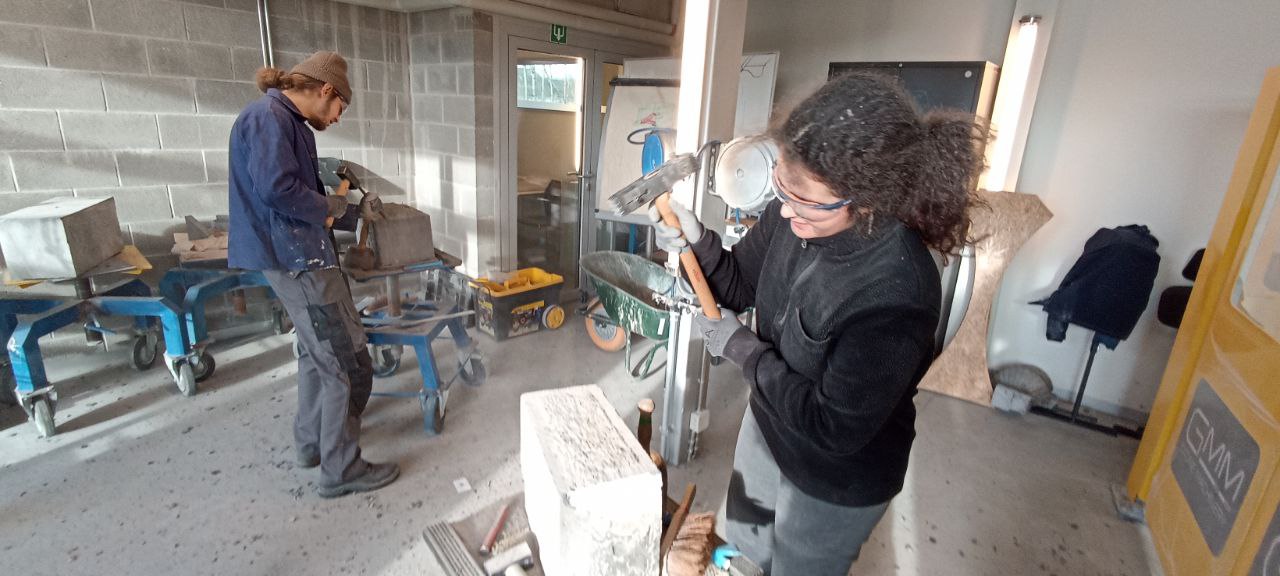
Assignment complete
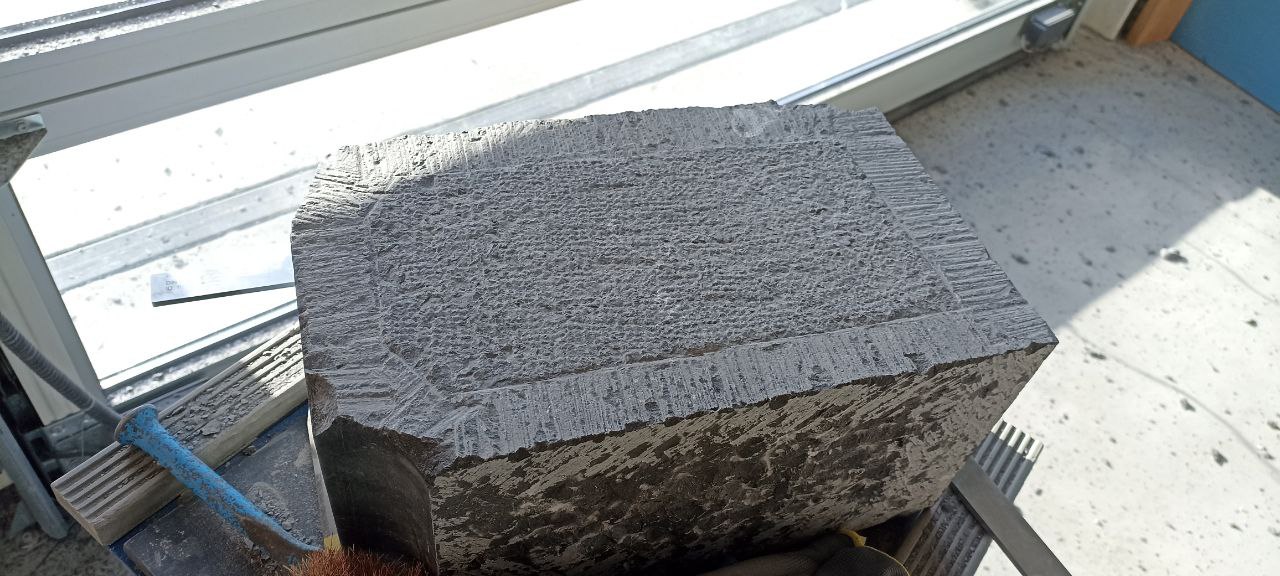
This is already enough to hold a beginner busy for weeks!
EXCERCISE TWO
Starting to carve a simple moulding in the training block. Here you can get some true fresh knowledge directly from The Source, meaning Christophe Mahy showing it (audio damped for understandable reasons):
In order to learn how to carve simple blocks it's very important to grasp how the chisel works, the ways to lay and orient it on the stone itself, and the way the energy from the impact of your hits gets spread in the stone. This is fundamental to avoid chipping off the edges or make your stone literally explode! A good stone carver hits with precision and commensurate energy, holding his tools loosely, proceeding methodically and cautiously. It is necessary to work mostly indirectly, preemptively preparing portions of stone in order to interrupt the spread of the shock waves of your tools hitting the material.
Now, if you watch the previous video again with this in mind, you will see many new things...
Now, if you watch the previous video again with this in mind, you will see many new things...
Results of the demonstration
EXERCISE THREE
The real quoin. This time it's forbidden to make mistakes! ...or at least...try not to!
First, we take the quoins we made during the last summer's workshop, in which we simply shaped machine cut blocks to form all the quoins of our arch. Then, with the help of a moulding template and the newly learnt knowledge, we try to carve them.
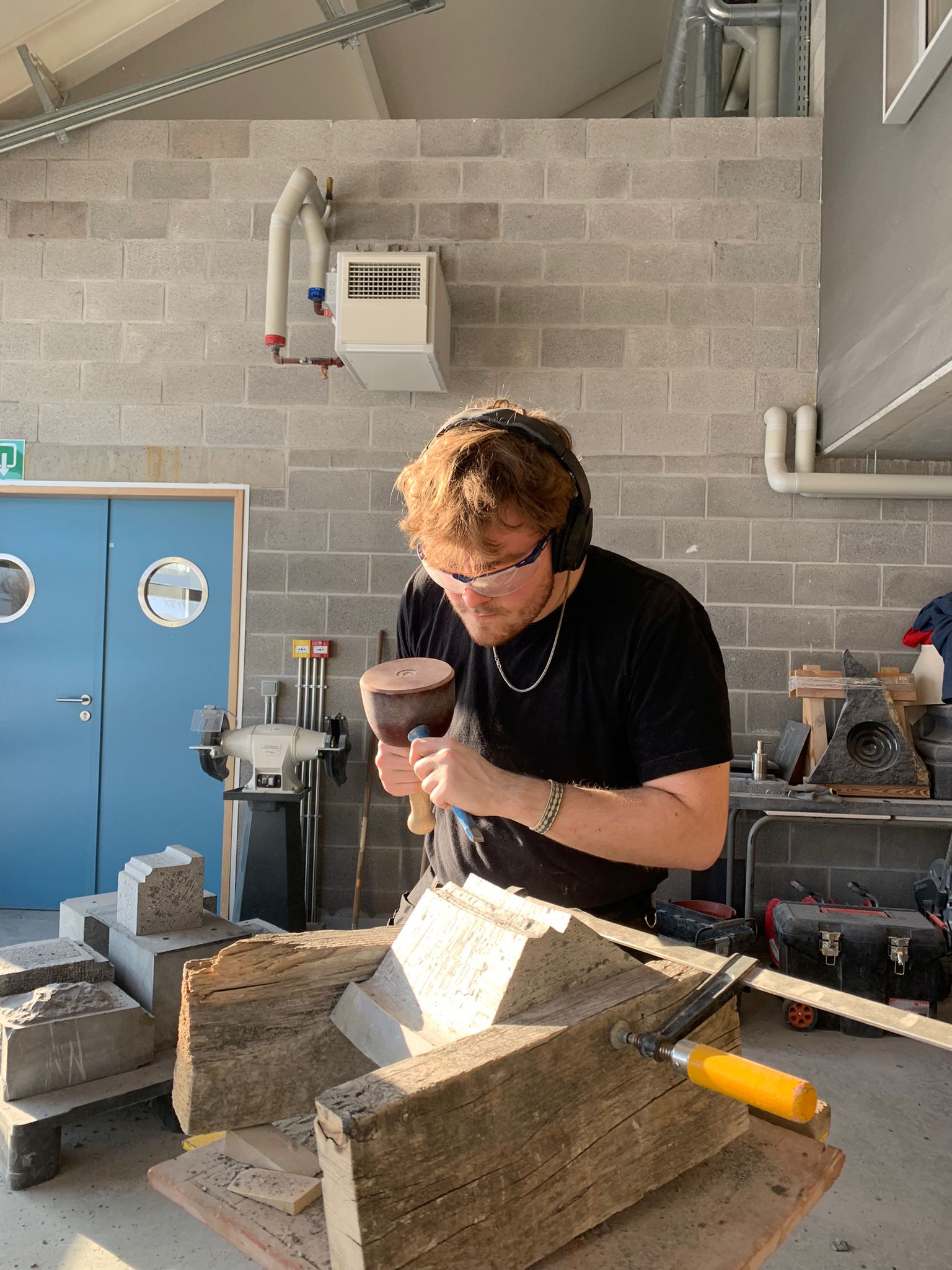
RESULT:
Due to time reasons it's not 100% completed (you know, the first..."stepping stones"!) but I'm quite satisfied of the work, it doesn't need much more adjustments to be ready for the next phase! For that, we are already theorizing of having a brick workshop to build the rest of the wall around it! But let's not rush...
Due to time reasons it's not 100% completed (you know, the first..."stepping stones"!) but I'm quite satisfied of the work, it doesn't need much more adjustments to be ready for the next phase! For that, we are already theorizing of having a brick workshop to build the rest of the wall around it! But let's not rush...
Removing the framework
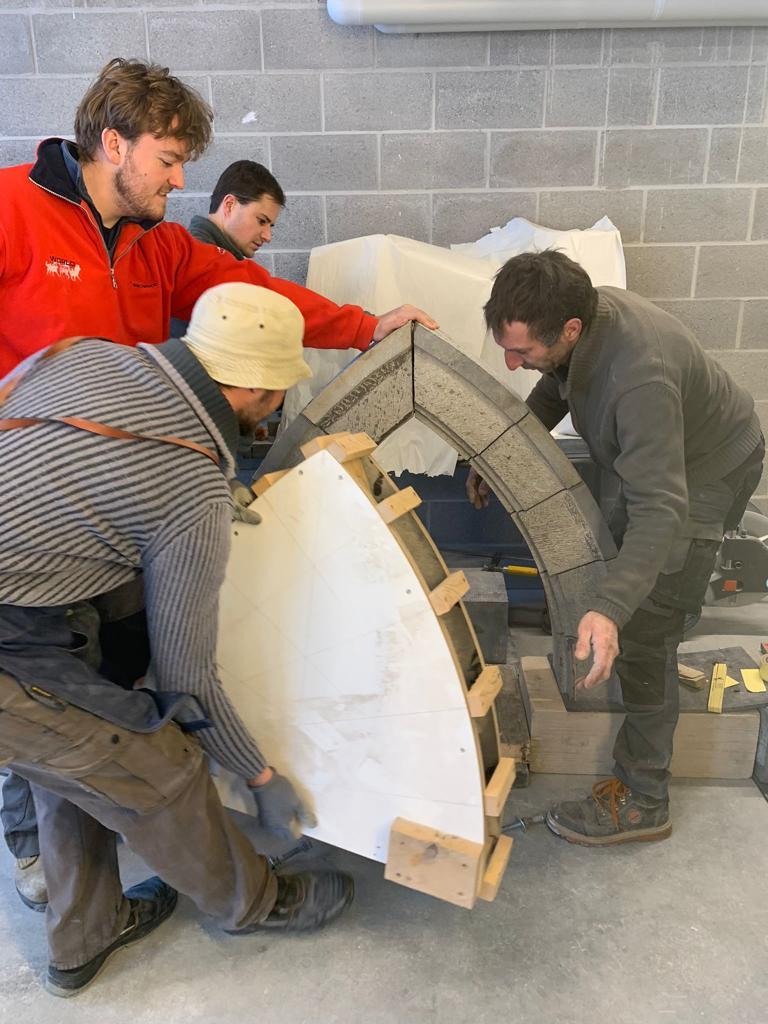
A very happy Christophe
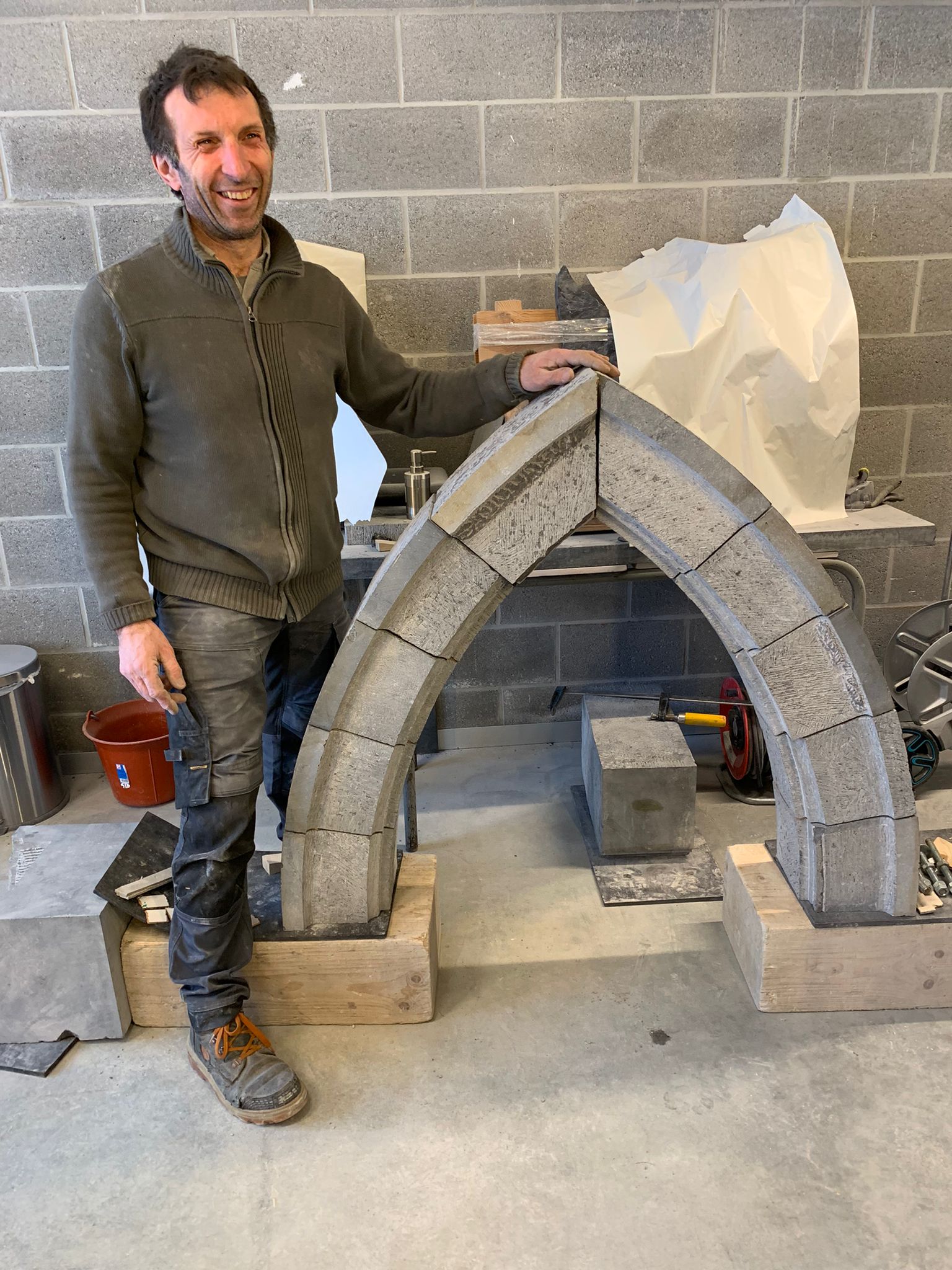
Our non-perfect quoins still look good
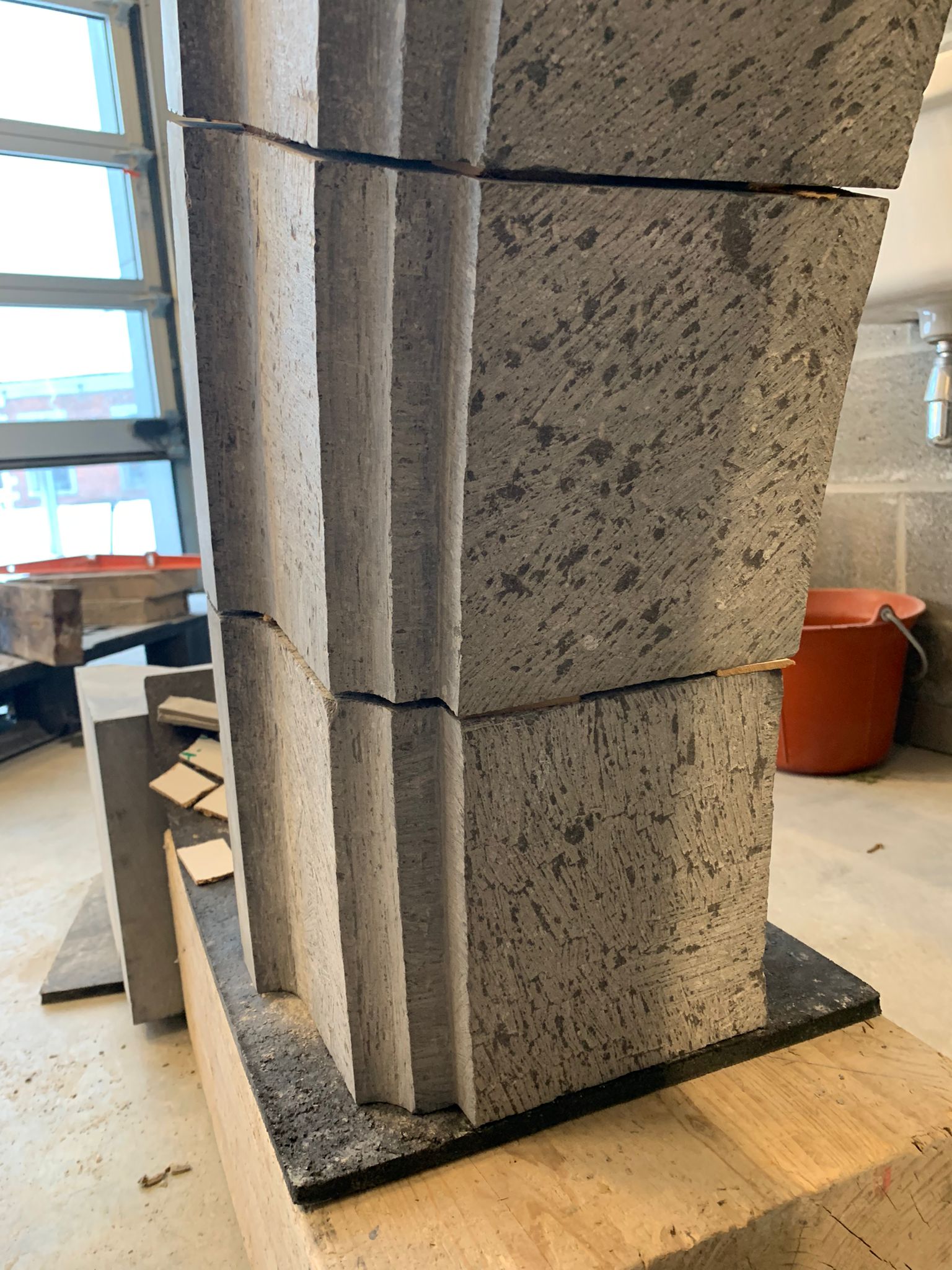
The toolbox we used
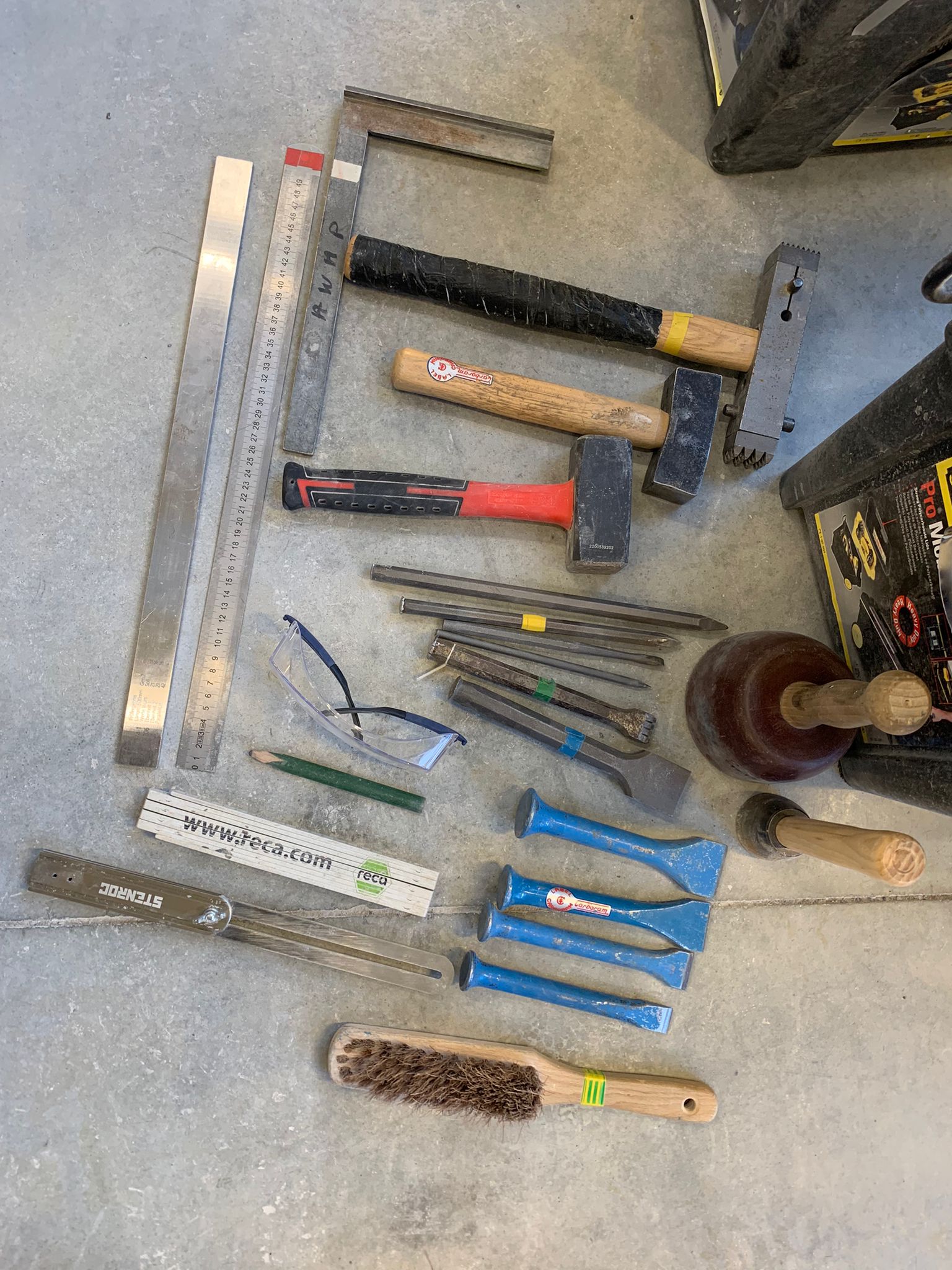
MAN AGAINST THE MACHINE?
We Traditionals have a critical philosophy towards unconditioned progress. In short, we want to control and limit the amount of technology we use, in order to preserve Human primacy. Our adversaries, the Modernists (whom don't know yet that "modern" age is long ago ended) mock us by representing us as a sort of extremized anti-tech Amish-ism. Obviously it's not like that, and obviously we are REALISTS.
We are now going to talk about costs, time, and effort.
The heated topic: better machine cut or hand carved?
Let's start from reality, which is this:
A moulding carved by a beginner
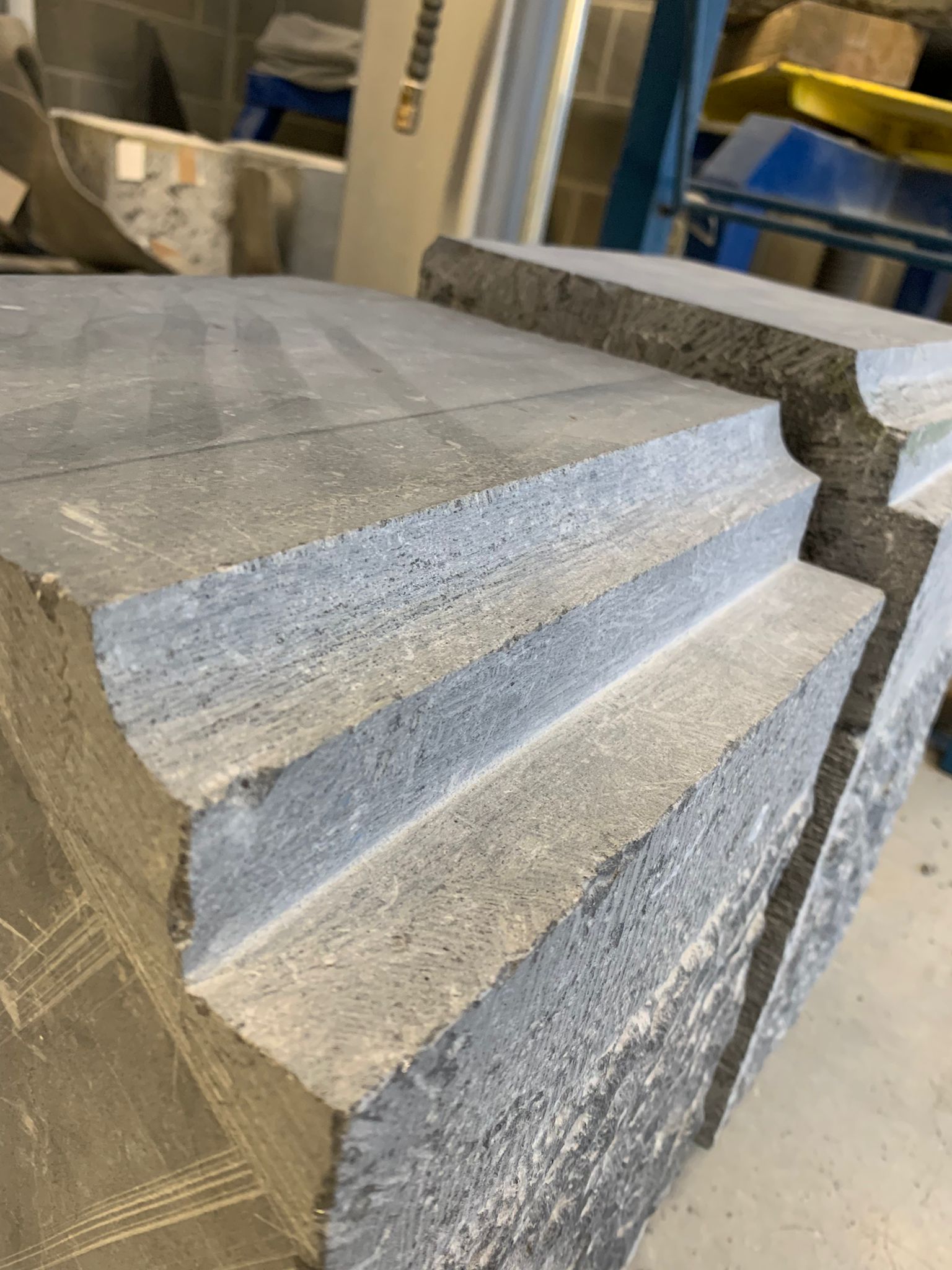
A machine-cut moulding
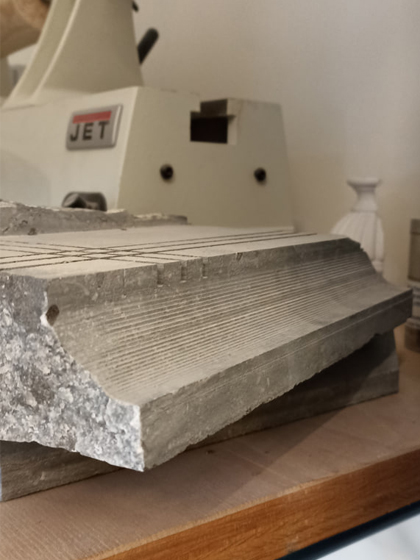
An experienced stone carver like Christophe could carve 3 or 4 quoins per day out of a machine cut block. The machine is indeed faster, but that's not an absolute point. We should ask ourselves where do our stones go in a building, and how many of them we need.
-If we are working with a limited amount of pieces, as in a restoration job, the time to program and operate the machine would far exceed the costs of hand carving them.
-If we are going to set our stones in a place that is not directly and closely inspectable by the users of the building, it may be preferrable to have a machine cutting the blocks like, say, in a cornice always far away from the observer.
So, there are project-specific variables which are also relative to each other. Do not trust larpers on the internet affirming anything about miracles of technology or belittling "backwards traditionals".
Another important thing to say is «Thank You» to the blue stone quarry, which is a state-owned entity. Thanks to the public funding of the Walloon Government (one of the three Belgian governments...!) we had -as an association- to just pay Christophe for his tutoring. The rest was completely provided by the bad public spending that many would like to cut. The toolbox pictured above, plus the special wheeled station to set our block onto totaled up to more than 1000€ per student. Not even mentioning the quality of the working environment, housing a wide set of machines and facilities.
What does this mean?
That the Government financed Beauty and Culture for once, instead of using the infinite money supply to feed the appetites of financial overlords and their bankrupt companies; and this is a political choice. The quarry keeps operating thanks to public funding because blue stone is an important cultural element of the local reality. Through the quarry a tradition is kept alive, a structure is preserved in our decadent society, youths are being trained to take their steps into the future and moreover money is being invested in the real, local economy.
What does this mean?
That the Government financed Beauty and Culture for once, instead of using the infinite money supply to feed the appetites of financial overlords and their bankrupt companies; and this is a political choice. The quarry keeps operating thanks to public funding because blue stone is an important cultural element of the local reality. Through the quarry a tradition is kept alive, a structure is preserved in our decadent society, youths are being trained to take their steps into the future and moreover money is being invested in the real, local economy.
It's a political choice because we strive for the Human primacy over technology, which should be a tool and not a driving force of development. According to us, the driving force of development comes from within: the personal improvement that brings learning a trade or an art helps the new generation build up their self-confidence, humility and patience. Qualities that are more and more rare to be found in the average population.
Remember, Architecture IS Politics. Action follows thoughts, and we are doing politics right now.
Thanks for reading, and see you at the next one! Don't forget to follow La Table Ronde de l'Architecture and check our upcoming workshops or summer schools.
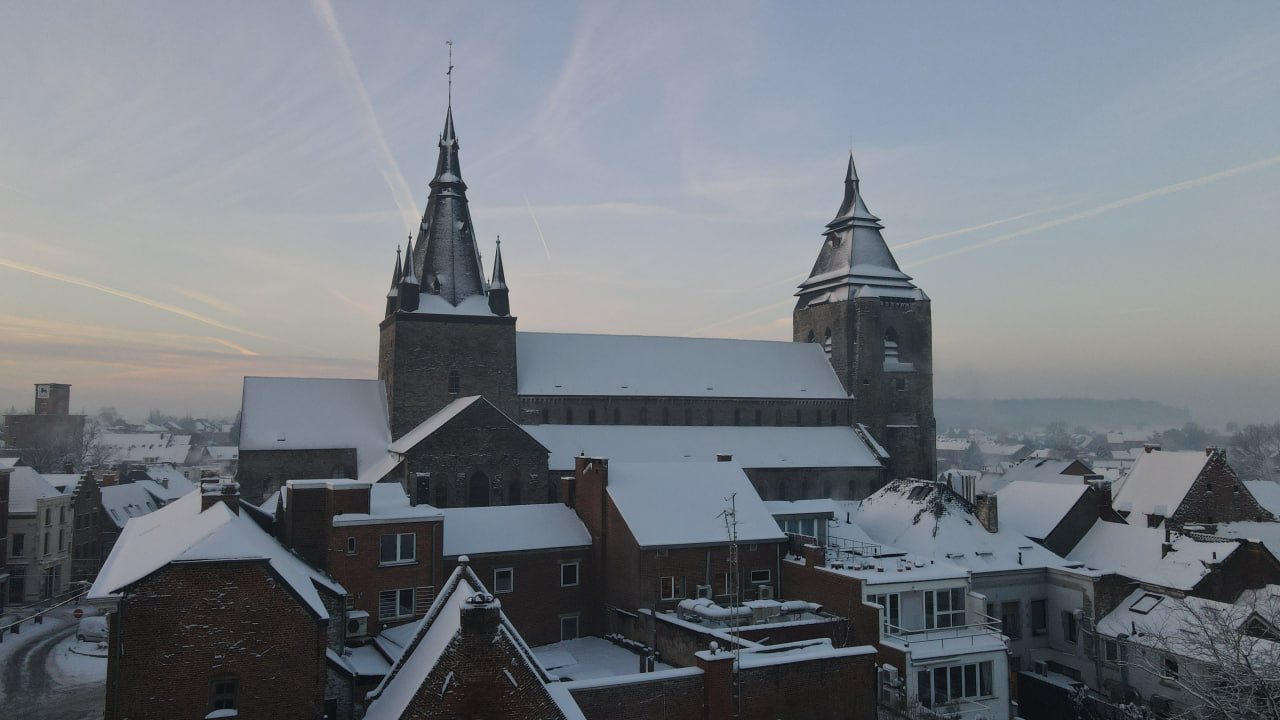
#
@TRA
Posted: 22/01/2024 21:39 — Author(s): Polemicarc
x
Responses
No responses yet ...
Be the first to write a response. ↴